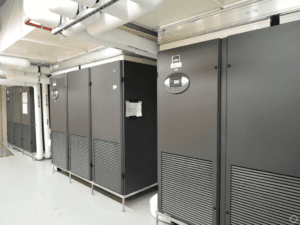Cooling infrastructure is the backbone of your data centre's efficiency, and with EziBlank's cutting-edge solutions, you can revolutionise your air-flow management. Our expertly designed blanking panels not only enhance cooling performance but also significantly reduce energy consumption, ensuring that your investment pays off in both reliability and cost savings. Discover how our innovative systems can optimise your infrastructure and elevate your operations, ensuring that your business thrives in today's competitive landscape. Don't let inefficiencies hold you back—partner with EziBlank for a sustainable, high-performance future.
Data Center Cooling: Best Practices
Implementing best practices for data centre cooling is crucial to maintaining efficiency, reducing energy costs, and ensuring the longevity of equipment. Key practices include optimising airflow by using blanking panels to fill unused rack spaces, which prevents hot air recirculation and ensures that cool air reaches the servers effectively. Additionally, employing hot and cold aisle containment systems can further enhance cooling efficiency by separating hot exhaust air from cold intake air, reducing the workload on cooling systems. Regular maintenance of HVAC systems and air filters is essential to ensure that cooling units operate at peak performance. Monitoring temperature and humidity levels in real-time allows for adjustments that prevent overheating and ensure optimal conditions. By following these best practices, data centres can achieve significant improvements in cooling efficiency, leading to lower operational costs and improved equipment performance.
Read More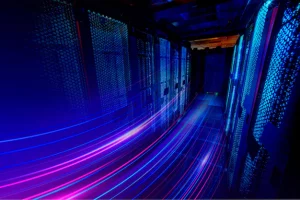
Hot Aisle Containment Solutions & Products
Hot aisle containment solutions typically include barriers, doors, and ceiling panels that effectively seal off the hot aisle, creating a controlled environment where the separation of hot and cold air is meticulously maintained. This separation ensures that hot exhaust air is directed away from the servers and into return air ducts, preventing it from mixing with the cool intake air and thereby enhancing the efficiency of the cooling system. Implementing these solutions not only significantly reduces energy consumption and lowers cooling costs but also enhances the overall performance, reliability, and lifespan of the data centre’s infrastructure, making it a vital strategy for modern data centres aiming to optimise their operations.
Read More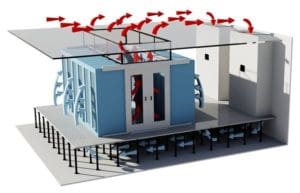
Green Data Center Case Study
A green data centre case study highlights how implementing sustainable practices can lead to significant environmental and financial benefits. In one example, a data centre achieved substantial energy savings by integrating renewable energy sources such as solar and wind power into its operations. Additionally, the facility utilised advanced cooling technologies, including free cooling and liquid cooling systems, which drastically reduced the reliance on traditional, energy-intensive air conditioning. The implementation of hot and cold aisle containment systems further optimised airflow, minimising energy waste. Through these initiatives, the data centre not only reduced its carbon footprint but also realised considerable cost savings, demonstrating that sustainability and efficiency can go hand in hand. This case study serves as a model for other facilities aiming to transition towards greener, more energy-efficient operations.
Read More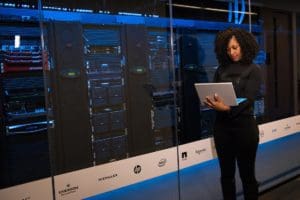
How to Manage Airflow in a Data Center
Managing airflow in a data centre is crucial for maintaining optimal cooling efficiency and ensuring the longevity of equipment. Effective airflow management begins with the strategic placement of blanking panels in server racks to eliminate gaps, which prevents hot air from recirculating and ensures that cool air is directed precisely where it’s needed. Implementing hot and cold aisle containment systems further enhances airflow by separating the hot exhaust air from the cool intake air, reducing the workload on cooling systems. Proper cable management is also essential to avoid obstructions that can disrupt airflow patterns. Additionally, using perforated floor tiles in the raised floor environment helps channel cool air directly to the servers. Regular monitoring and adjustments based on real-time data are necessary to maintain efficient airflow and adapt to changes in the data centre’s layout or load. These strategies collectively help optimise cooling, reduce energy consumption, and improve the overall performance of the data centre.
Read More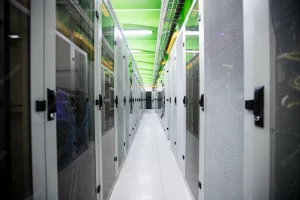
What is Cold Aisle Containment
Cold aisle containment is a data centre cooling strategy designed to improve energy efficiency and optimise temperature control. In this setup, the cold aisle, where the fronts of the server racks are located, is enclosed to prevent the mixing of cold air with the hot exhaust air from the servers. This containment system ensures that the cool air from the air conditioning units is directed exclusively towards the servers' intake, maximising cooling efficiency. By containing the cold aisle, data centres can maintain lower temperatures with less energy, reducing the workload on cooling systems and lowering overall energy consumption. This approach not only improves the performance and reliability of the equipment but also contributes to significant cost savings and a more sustainable data centre operation. Cold aisle containment is particularly effective in high-density data centres where cooling demands are substantial.
Read MoreWhat is Hot Aisle Containment
Hot aisle containment is a cooling strategy used in data centres to improve energy efficiency by isolating the hot air generated by servers. In this setup, the hot aisle, where the backs of the servers expel warm air, is enclosed, preventing the hot air from mixing with the cool air in the rest of the data centre. This containment ensures that the hot air is directed straight to the cooling units, where it is removed or recycled, thereby reducing the workload on the cooling system. By maintaining a clear separation between hot and cold airflows, hot aisle containment helps to lower energy consumption, enhance cooling efficiency, and maintain optimal operating conditions for the servers, making it a crucial strategy for modern data centre management.
Read More
The Basics of Airflow Management
Airflow management is a fundamental aspect of data centre design that focuses on optimising the cooling process to ensure that IT equipment operates efficiently and reliably. The primary goal is to prevent the mixing of hot and cold air within the data centre, which can lead to hotspots and inefficient cooling. Key strategies include the use of blanking panels to seal off unused rack spaces, directing cool air to where it’s needed most and preventing hot air from recirculating. Additionally, hot and cold aisle containment systems are employed to physically separate the cold intake air from the hot exhaust air, further improving cooling efficiency. Effective airflow management reduces the energy required for cooling, lowers operational costs, and enhances the overall performance and lifespan of data centre equipment.
Read More
Know Your Data Centre Cooling
Understanding your data centre cooling system is essential for maintaining optimal performance and energy efficiency. Effective cooling strategies are crucial in preventing overheating, which can lead to equipment failure and costly downtime. Key aspects of data centre cooling include airflow management, where techniques like hot and cold aisle containment and the use of blanking panels help to direct cool air to the right places while preventing hot air recirculation. Additionally, advanced cooling technologies such as liquid cooling or free cooling can further enhance efficiency by reducing reliance on traditional air conditioning. Regular monitoring of temperature and humidity levels is also critical, allowing for real-time adjustments to maintain optimal conditions. By knowing and optimising your data centre's cooling, you can significantly reduce energy consumption, lower operational costs, and ensure the long-term reliability of your IT infrastructure.
Read More